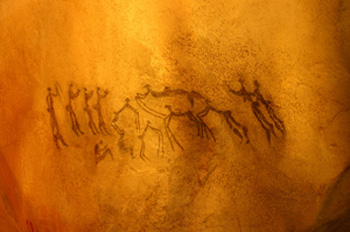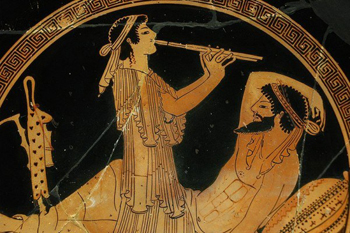Jonathan L. Friedmann, Ph.D.
The companionship of music and supernatural speculation appears to be almost as old as humanity itself. Paleolithic cave paintings, possibly created by shamans, are often found in the most resonant parts of the cave, implying their use in a chant-infused ritual. Hurrian song tablets from the city of Ugarit (c. 1400 B.C.E.) are not only the earliest examples of written notation, but are also hymns. Anthropologists observe that all cultures, ancient and modern, exhibit some partnership of singing/chanting and religious ceremony. Explanations for this pervasive phenomenon typically focus on the spiritual-emotional quality of sound. The ineffable essence of music simulates or stimulates the ineffable essence of the supernatural. While intuitively valid, such inferences overlook a more fundamental link between music and supernaturalism: the desire for order.
The Future of an Illusion (1927) presents the emphatic culmination of Sigmund Freud’s lifelong thinking on religion. Among its many proposals is the role of gods and spirits in the “humanization of nature.” The human psyche is uncomfortable with uncertainties. The precariousness of nature and uncertainty of life events suggest a cold and uncaring universe. “But,” Freud writes, “if the elements have passions that rage as they do in our own souls, if death itself is not something spontaneous but the violent act of an evil Will, if everywhere in nature there are Beings around us of a kind that we know in our own society, then we can breathe freely, can feel at home in the uncanny and can deal by psychical means with our senseless anxiety.” In other words, if otherwise inscrutable happenings, good and bad, can be attributed to evil spirits and the deities that combat them, then a sense of purposeful organization can be obtained. The inexplicable becomes explicable.
As a theory of the origin of religion, this is perhaps too reductionistic—a charge Freud himself was willing to entertain. However, its logic does play out in all sorts of theologies and cosmologies. Anthropocentric projections onto nature are instinctual and often subconscious. They underpin descriptions of the weeping willow, raging storm, wise old owl, and pleasant valley. Such humanization brings comprehension to an unstable world. That this impulse would generate religious conceptions seems inevitable.
Music can be understood as a sonic consequence of the yearning for order. Natural sounds, like visible phenomena, can give the impression of disarray and erratic spontaneity. The earliest human-made patterned sounds—what is minimally defined as music—were in all likelihood imitations of sounds from the local habitat, generated by rain, wind, insects, birds, critters, and the like. By mimicking these sounds, humanity could achieve psychological control over them, and, in turn, hear their own sentiments expressed in nature.
Admittedly, this musical conjecture has the same reductionist shortcomings as Freud’s proposal. Neither theory addresses the full picture of why and how human beings invented religion and music. No single theory can do so. Nevertheless, their shared motivation adds some clarity to the age-old union of music and religion. Both aid our largely fanciful quest for reason and order.
Visit Jonathan’s website to keep up on his latest endeavors, browse his book and article archives, and listen to sample compositions.









